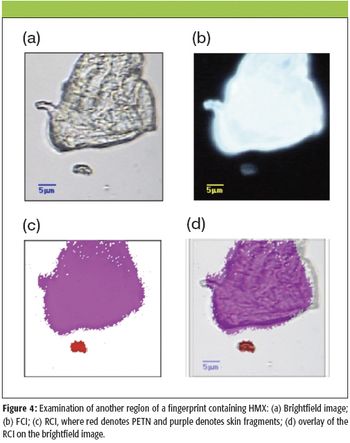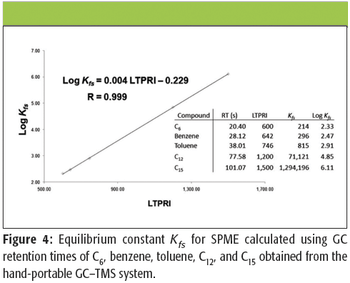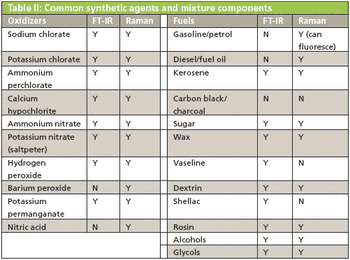
Special Issues
Advances in hardware and in data analysis make Raman and laser-assisted spectroscopy techniques valuable in hazardous materials analysis.

Special Issues
Advances in hardware and in data analysis make Raman and laser-assisted spectroscopy techniques valuable in hazardous materials analysis.

Special Issues
The use of explosive devices by terrorist groups has become a constant threat in recent years. Because of this threat, the U.S. Army and other organizations are developing spectroscopic techniques to detect explosives and perform forensic examination of scenes where explosives were handled. In our group, Raman chemical imaging (RCI) is being used for forensic examination of latent fingerprints contaminated with traces of explosives. RCI has the potential to be a powerful technique both for detecting explosives and providing the biometric information necessary to identify individuals who have handled explosives.

Special Issues
A person-portable gas chromatography–mass spectrometry (GC–MS) system employing a toroidal ion trap mass spectrometry (TMS) detector was used to analyze chemical threat related compounds. Introduction of analytes into the heated injector of the instrument was by solid-phase microextraction (SPME), and fast resistive heating of a low thermal mass (LTM) gas chromatography column assembly provided rapid analysis times. Methodology for positive identification of chemical threats can combine chromatographic retention time, comparison to traditional electron ionization mass spectral libraries, and observation of expected pseudomolecular ions produced through self-chemical ionization. Methods are discussed for sampling by SPME with GC–MS analysis in the field to measure airborne analyte concentrations.

Special Issues
The sobering reality is that homeland security is unique in the field of analytical chemistry. In an industry such as the baby formula industry, a change in process can end a contamination scare and for the most part, prevent a future recurrence.

Special Issues
Interest in vibrational spectroscopy, principally Raman and mid-IR (FT-IR) continues to increase as these analytical techniques may be applied to a wide variety of fields, including the safety/security sector. Raman and FT-IR have seen rapid deployment for use in homeland security applications, largely due to the high chemical specificity which allows robust identification. In this article, we discuss the application of the latest portable, rugged Raman and FT-IR handhelds, enabling robust identification of explosives, TICs, TIMs, and narcotics in the field. This article introduces explosives, their different classes, and the applicability of Raman and FT-IR spectroscopy to identify their components (commercial, HMEs, and IEDs) or precursors.

Special Issues
Documents have been investigated to determine the feasibility of utilizing Raman and SERS Raman spectroscopy for the identification and characterization of inks on paper. Fluorescence reduction methods have been employed to facilitate the analysis by reducing the nascent fluorescence from paper and ink. Furthermore, ink crossings were investigated to demonstrate that ink applied after creation of a document could be differentiated from the originally applied ink.